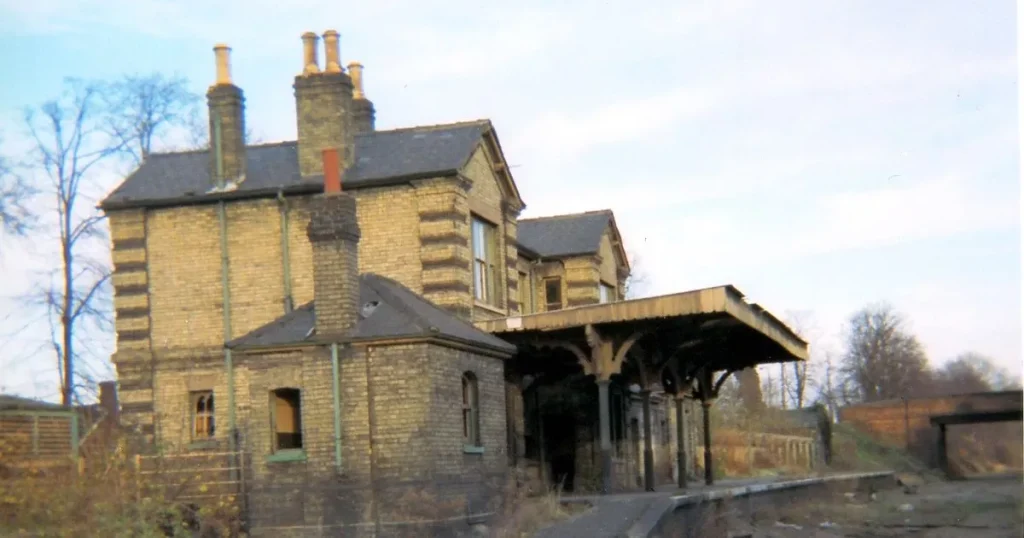Saffron Walden train station in Essex, originally opened in 1865, was funded by the local Gibson family, who used their bank to support the construction of the railway. The station remained independent until it was bought by the Great Eastern Railway in 1877. Initially, there were six daily return trains, and services were operated between Saffron Walden and London. Coaches from the 1890s were used on the line until the 1950s, when railbuses took over operations. The station closed in 1964 for passengers and three months later for freight services. The station was situated near the town of Audley End, where remnants of a separate platform can still be found in the current car park.
Today, most of the Saffron Walden train station site has been cleared of its previous railway-related structures and transformed for housing access roads, following along the former track bed. The main station building and a section of the platform have been converted into two private residences. Presently, the residents of Saffron Walden utilize a single train station situated at Audley End. The transformation of this historic location showcases the adaptability and repurposing of abandoned train stations while preserving elements of the past for future generations to appreciate and learn from.
Another example of a refurbished abandoned train station is the Canfranc Station, located in the Spanish Pyrenees, near the French border. Opened in 1928 as a rail hub, the station witnessed significant historical events during World War II, including espionage and gold trafficking. Following its closure in 1970, the station remained untouched for decades until work began on transforming it into a luxury five-star hotel, operated by the Barcelo Hotel Group. The renovation of Canfranc Station aimed to retain the station’s history and character while introducing modern facilities such as a wellness area, a pool, and three restaurants. This project has been a boon for the local economy and tourism in the region.
The conversion of abandoned train stations into new facilities or accommodations is not only a creative way to repurpose historical buildings but also serves as a catalyst for economic growth and local development. One such example is the renovation of the Canfranc Station into a luxury hotel, attracting tourists and providing an additional revenue source for the community. By preserving the architectural heritage of these stations and integrating modern amenities, these projects bridge the past with the present, offering unique experiences for visitors and residents alike.
Abandoned train stations hold a unique charm that intrigues adventurers and history enthusiasts, prompting them to explore these remnants of the past. While some stations may remain neglected for extended periods, others undergo fascinating transformations like the one in Saffron Walden, Essex. Originally opened in 1865 through the initiative of the Gibson family, the station has been repurposed into private residences, showcasing the adaptability of these historical sites. By preserving elements of the railway’s history within new developments, these projects contribute to the conservation of heritage and storytelling in contemporary contexts.
The revitalization of derelict train stations not only preserves historical landmarks but also breathes new life into neglected structures, creating opportunities for innovative projects and community engagement. The redevelopment of stations like Saffron Walden and Canfranc demonstrates the potential for adaptive reuse of abandoned sites, offering a blend of heritage conservation and modern functionality. These initiatives showcase the importance of valuing and repurposing historical assets, enriching the cultural landscape and fostering sustainable growth in communities by harnessing the unique character and potential of these sites. Through thoughtful renovations and creative approaches, abandoned train stations can be transformed into thriving destinations that celebrate the past while embracing the future.


